Meticulously restored 1938 Morris mailvan
Posted by Chris Graham on 18th May 2023
Mike Neale tells the story of the pre-war Morris mailvan and takes a look at Simon Grainger’s 1938 restored example.
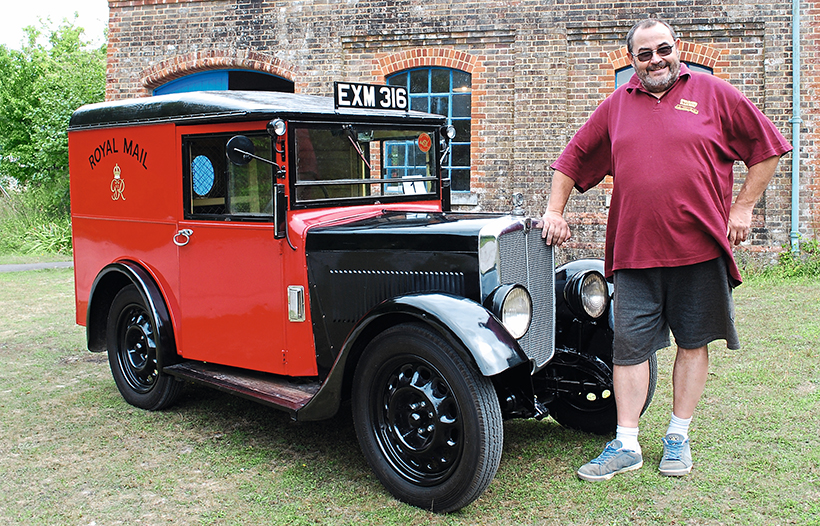
Simon Grainger bought his 1938 Morris mailvan in 2011. It was in a pretty rough state at that point, but has been meticulously restored since then.
In the 1920s, the General Post Office began using motorised vans, mostly made by Ford. There was some opposition to this as, although they were assembled in Manchester, Ford was American-owned and some people regarded them as too ‘foreign’ for a British government department to be using.
From 1924, the GPO tried out a few Morris vans with 70 and 105cu.ft. bodies and, from 1927 onwards, Morris became the favoured supplier; a situation that continued for several decades. 8cwt and 10cwt Morris Cowley-based vans and one-ton Morris Commercials were followed by the 5cwt Morris Minor-based mailvan.
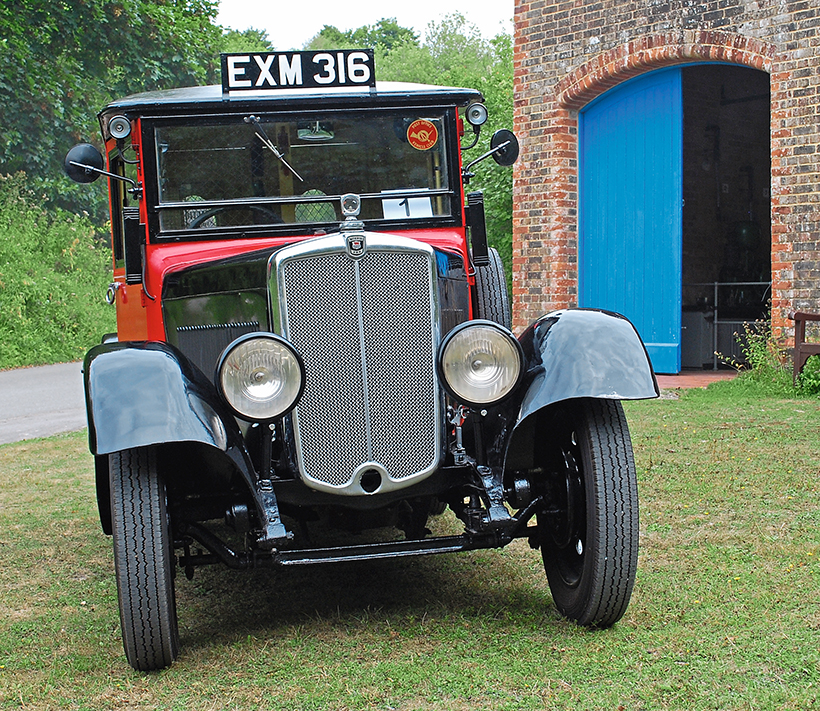
The front number plate was always mounted on the roof on the hybrid Minor vans.
Morris introduced its 5cwt Minor van in late 1929, fitted with an 8hp, 847cc overhead camshaft engine. The GPO didn’t buy any of these, however, but, in 1931, 12 Morris Minor 30cu.ft. mailvans were purchased (later reclassified as 35cu.ft.), by which time an 8hp, 847cc sidevalve engine was a standard Morris fitment. Bodywork was to a standardised GPO design, built by coachbuilders including Bonallack, Duple, Park Royal, Birch Brothers, Cross & Ellis and Normand. The 1931-32 models had a three-speed gearbox as well as worm and wheel steering, while later models had a four-speed gearbox and Bishop Cam steering. Armstrong friction shock absorbers were replaced by Armstrong hydraulic ones in 1934, and 19in wire wheels were fitted.
The Morris Minor 5cwt 35cu.ft. soon became the most numerous mailvan on the fleet. It was also used by Post Office Telephones, with two versions produced, the Internal Utility with a body like the mailvan, used by engineers servicing telephone equipment or investigating radio interference, and the External Utility, with an additional sloping windscreen above the main windscreen to allow the linesman to inspect overhead telephone cables without leaving the van.
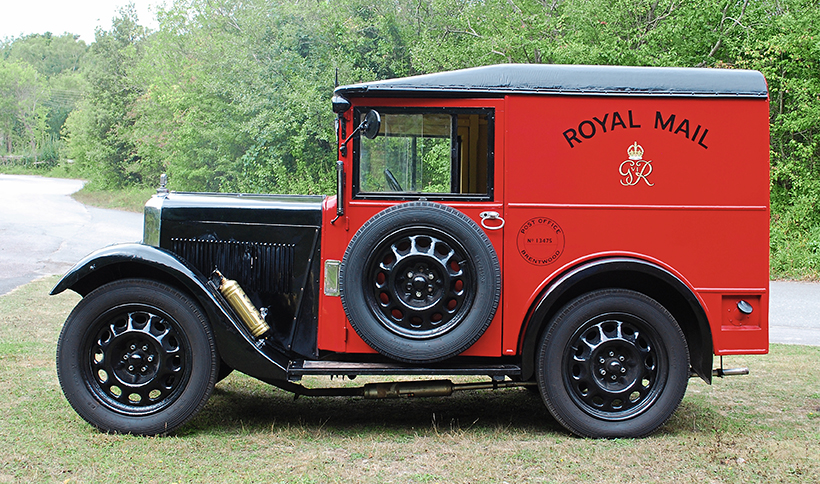
The Spare wheel mounted on the nearside door.
A 1930s hybrid!
When Morris replaced the Minor van with the Morris Eight Van in 1934, it sent a demonstrator with a factory panel van body in Royal Mail livery to the GPO, although none were ordered. As a massive fleet buyer, the GPO had sufficient clout to make Morris continue building Morris Minor chassis, but fitted with the new 918cc sidevalve engine, Lockheed hydraulic brakes and various other components from the Morris Eight. The fact that the GPO had placed an order for 50 Ford Model Y vans probably helped persuade Morris that it really ought to provide the GPO with what it wanted…
Most of these hybrid Minor vans had an SU carburettor, although some were fitted with a Solex Thermostarter carburettor. Six-stud Magna wire wheels were initially fitted, replaced from the end of 1937 by Easiclean 17in wheels with 4.50×17 tyres. The spare wheel was mounted on the nearside door, necessitating the Royal Mail allocation roundel to be positioned on the nearside panel between the door and the rear wheelarch.
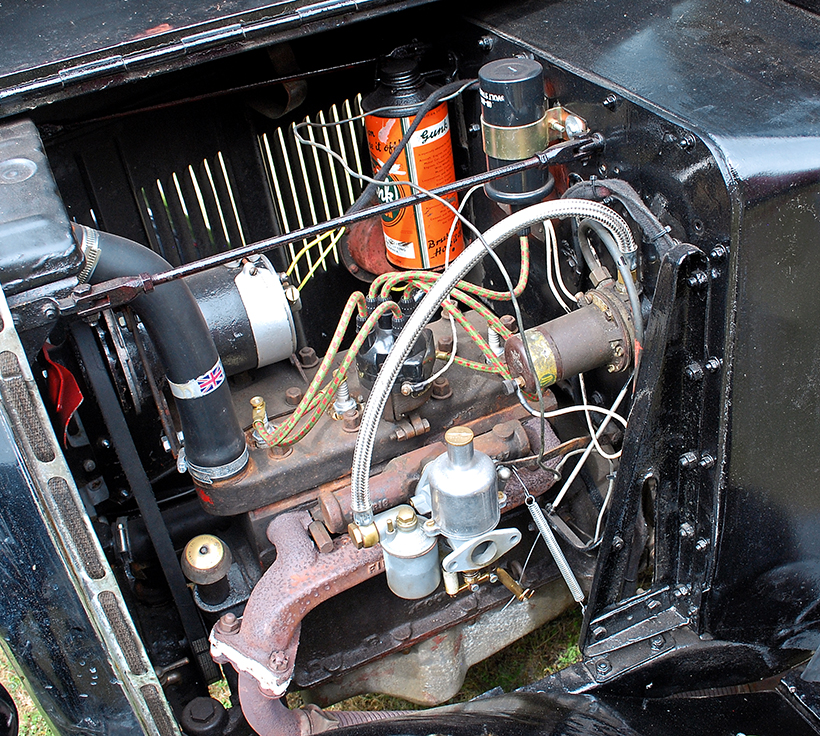
Power is supplied by a 918cc engine from the Morris Eight. This was one of the ‘hybrid’ van’s mechanical upgrades.
The grille was a little more stylish than the earlier Minor vans’ flat grille, being slightly tapered at the sides and curved at the bottom. The front registration plate was mounted on the roof and a single windscreen wiper was fitted. The hybrid vans still had GPO-spec coachbuilt bodies for both Royal Mail and Post Office Telephones, and were built until 1940, when replaced by the Morris Z van.
A batch of 500 of the Morris 35cu.ft. hybrid mailvans was ordered in 1938, with GPO serial numbers 13129 to 13628, given ELO, EXD and EXM registrations. The bodywork for the whole batch was built by Duple Coachworks, in Hendon. One of these is EXM 316, serial number 13475, allocated to Brentwood in Essex.
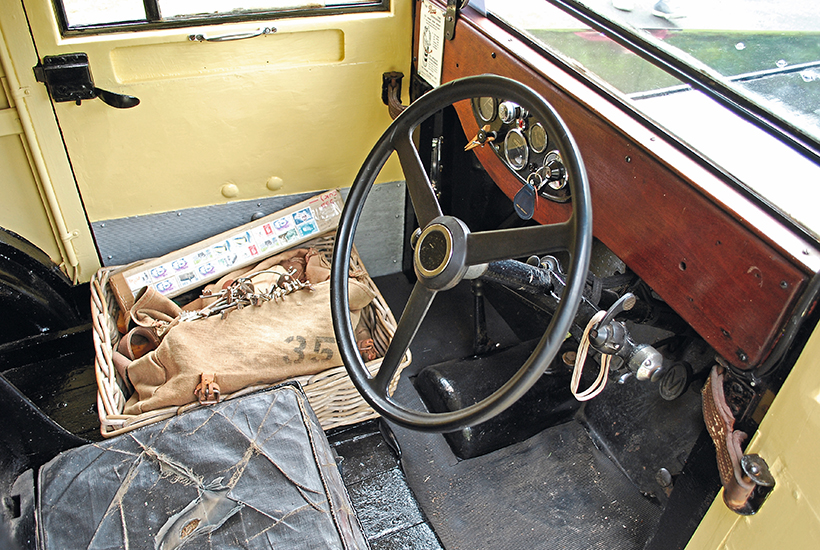
There’s no passenger seat, just a wicker basket for mail.
This van was bought by Simon Grainger from West Sussex in 2011, in a pretty rough state. The original 918cc sidevalve engine had been overhauled by a previous owner, with new pistons and valves fitted, but not a lot else had been done to it. “Some of it was painted grey, some red, there were no Royal Mail logos, no fire extinguisher, the brakes didn’t work and the wiring was for a house doorbell!”, notes Simon.
The body was completely overhauled, Simon stripping it back to bare metal and then repainting it with coachpaint. A new roof was fitted, made of plywood with original-type canvas stretched over the top, painted with black Craftmaster paint. “A friend restores showman’s living vans and so was able to get hold of the canvas and redo it,” Simon explained.
New Royal Mail lettering in black (gold lettering on mailvans didn’t arrive until 1951/52), the nearside allocation roundel and the GR VI letters and crowns were then applied.

The fire extinguisher was missing when Simon bought the vehicle. Fortunately, his late father had kept one.
New brakes, tyres and inner tubes were fitted. The tyres on the van when Simon got it had original red inner tubes stamped ‘GPO,’ so were well past their use-by date! Simon adapted a Morris 1000 exhaust to fit the van, as it has the same size bore. Obviously, a new wiring loom was also fitted.
The externally-mounted semaphore trafficators were missing, as were the separate sidelights mounted on either side of the windscreen. Simon managed to find replacements at the Beaulieu Autojumble. He always keeps an eye out online for Morris Eight engine spares. Fortunately, the original radiator surround responded well to a good polish.
Fast it is not. Simon reckons that 35mph is about the top speed, so the van is perhaps the very definition of ‘snail mail’.
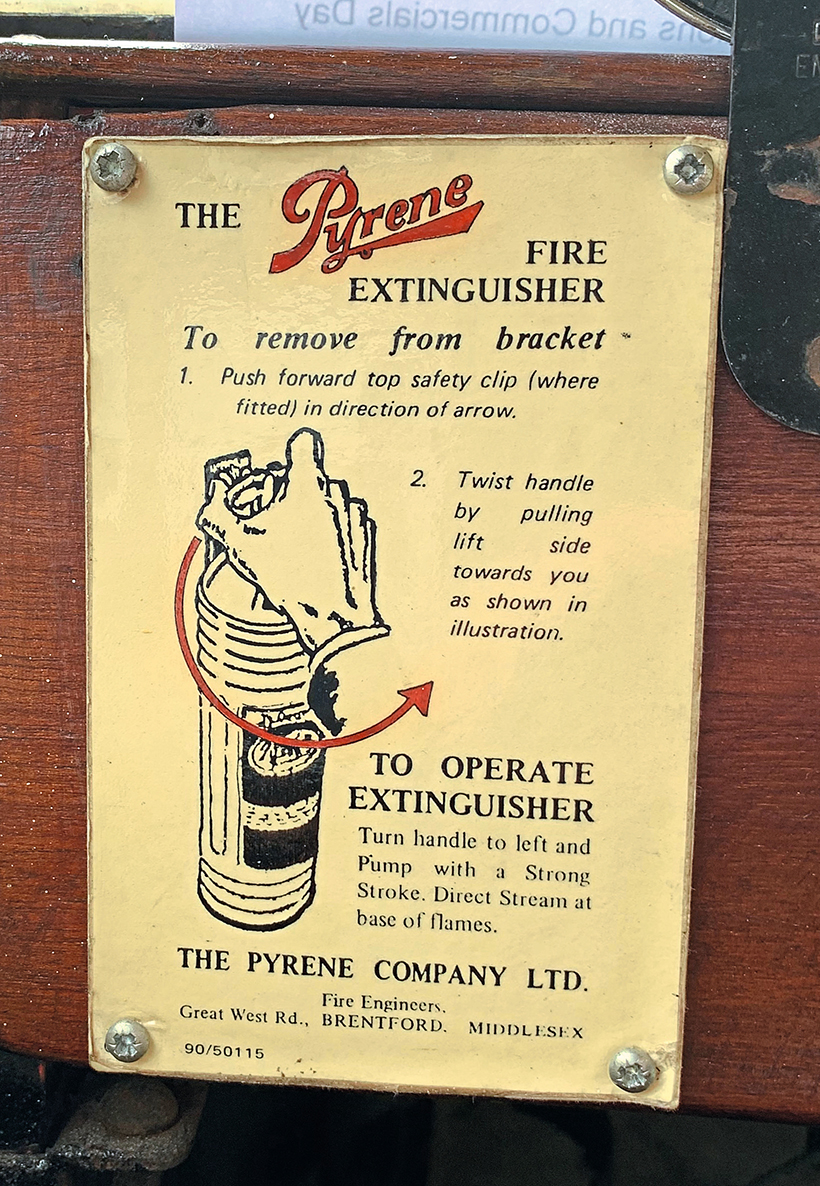
Instructions on how to use the fire extinguisher and found inside the cab.
I wondered what had led Simon to buy this particular van. “My father, Michael, was in the Post Office for 46 years – he started as a telegram boy and worked his way up. He became a postman at Windsor, where he used to empty the mailboxes and deliver mail at Windsor Castle. A family friend had a collection of Royal Mail vehicles, which my brother, Colin, was really interested in, and I used to go along with him as a child to help polish and clean them, so I got into them as well. Then my dad died in January 2011. My uncle used to have a pre-war Minor mailvan, so when I saw this one come up for sale in Camberley on eBay, my brother and I decided to go and have a look at it,” Simon told me.
“When we saw it, my brother said, ‘We’re having it!’ The plan was that we’d restore it together as a tribute to my dad.”

Semaphore trafficators and high-level sidelights were a lucky find at the Beaulieu Autojumble.
However, before the brothers could collect the van, there was another tragedy. Simon’s brother also died, aged 52 of a massive heart attack, in June 2011, less than six months after their dad. Simon decided to press on with the purchase and got a friend to come over with a trailer to pick it up. He’d now be restoring the van on his own, as a tribute to both his dad and his brother.
Simon has put various period-correct items and memorabilia inside the van. The post sacks and the wing-mounted fire extinguisher were his dad’s, while other items were tracked down online. He also has a 1960s postman’s uniform that belonged to his dad.
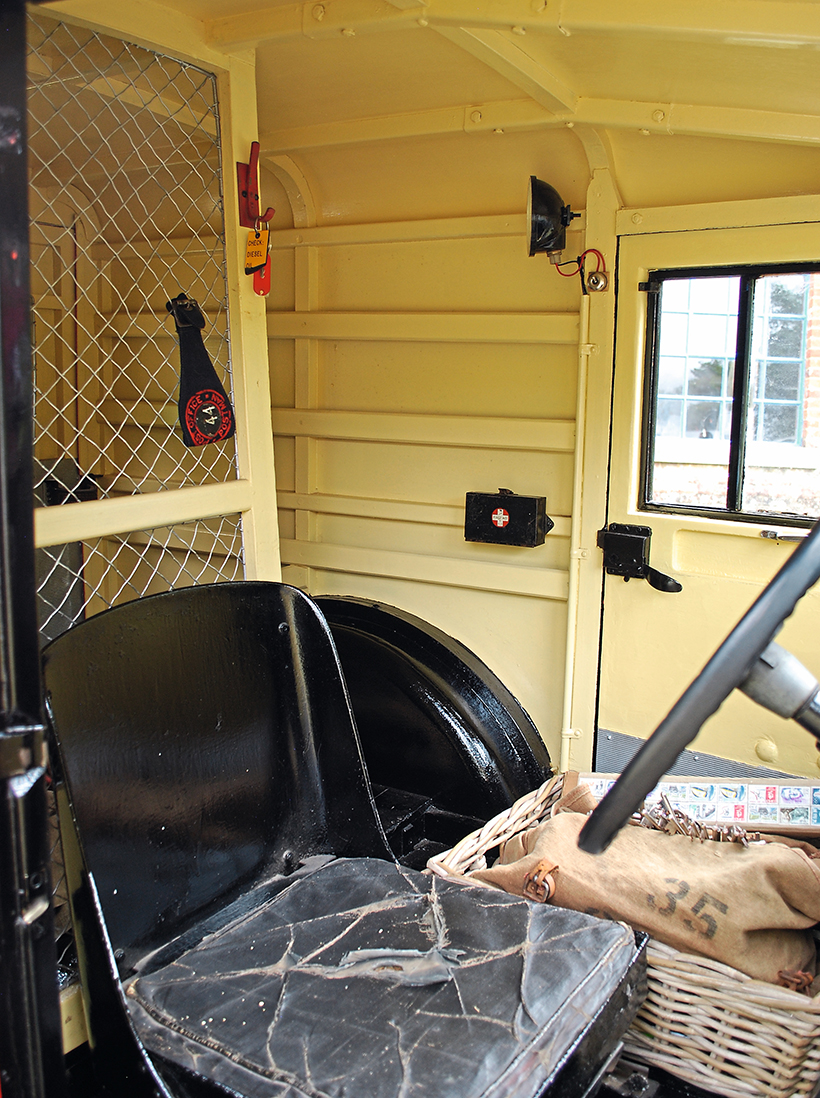
The interiors of mailvans were painted this light straw colour for many years.
This is the first vehicle that Simon has restored. He now takes it to car shows and uses it for period film work. It also appeared in a Royal Mail film about the mail rail at the Postal Museum at Mount Pleasant, in London. “They have an EXM-registered Morris Minor van in the museum, which is actually an ex-Post Office Telephones Van that they have restored as a Royal Mail van, but they wanted to use mine in the film.”

This mesh screen was included to stop parcels hitting the driver under braking.
He also owns a 1970 Morris Minor Mailvan, which he bought about four years ago. The later van was originally supplied to Bournemouth Head Postmaster, and allocated to Christchurch, being sold off in 1976, but later bought back by Royal Mail and restored for publicity use on the Isle of Wight. They sold it off again at auction, and Simon went to view it when the next owner decided to sell. Simon’s wife bought it for him as a surprise while he was still looking at it! A member of both the Post Office Vehicle Club and the Historic Commercial Vehicle Society, Simon took the 1970 van on the 2022 HCVS London to Brighton run.
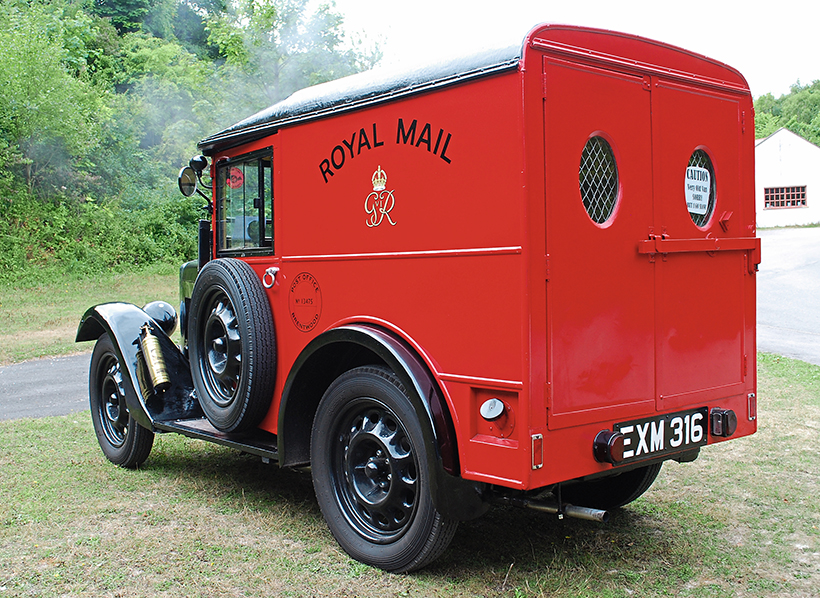
Oval rear windows were part of the standard GPO specification. A rear door locking bar was also fitted to mailvans.
As well as the two Minor Mailvans, he has a 1930s Wicker Basket Tricycle and has inherited his brother’s 1965 BSA Bantam D1 Telegram bike, last restored in the 1980s, which is his next project.
With thanks to Simon Grainger, Amberley Museum (amberleymuseum.co.uk) and the Post Office Vehicle Club
(povehclub.org.uk)
This feature comes from the latest issue of Classic & Vintage Commercials, and you can get a money-saving subscription to this magazine simply by clicking HERE





